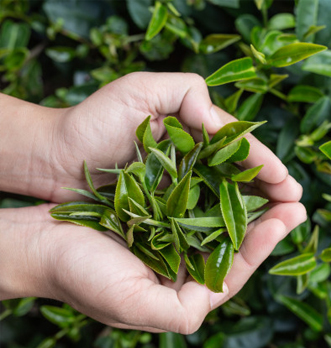
Many consumers think that green tea, white tea, and black tea are different varieties of tea leaves. In reality, black tea is green tea that has undergone oxidation (often confused with fermentation). Widely consumed in the West, especially by the English, black tea comes in endless varieties to offer a multitude of flavors.
A brief history of black tea
The history of black tea is quite amusing.
According to the most well-known legend, in the 17th century, a ship coming from China and heading to England was importing green tea.
It was stored below the waterline and suffered from the heat. Over the course of the journey, the tea underwent oxidation, turning its leaves black.
Far from deterring the English, they consumed it and preferred it to green tea for "tea-time". That's the myth.
We don't know much about the true origin of black tea, which doesn't affect its popularity in Europe.
Black tea is grown in Asia, mainly in China, where it is called red tea, because of the color it gives to the water during infusion. In fact, the term red tea can cause confusion, as it can also refer to rooibos.
Black tea producing countries
Tea comes from the tea plant, a shrub known as Camellia Sinensis. It originates from the Far East where it has been cultivated for centuries for its leaves that produce the famous beverage.
China is the world's largest producer of tea, of all colors. But surprisingly, black tea has many other origins. Thus, we can find black teas that come from different regions.
For example, India is the second largest producing country. This is explained by its colonial past under the British, who are tea lovers.
Next come Kenya, then Sri Lanka, Turkey and Iran as well as Japan.
Indian black tea
India is the second largest producer of black tea, including some excellent teas. Its gardens are very famous and its teas are highly appreciated worldwide, particularly in Great Britain, due to its former colonial status.
Assam black tea
Assam tea is a black tea that constitutes half of India's production, on the slopes of the Himalayas. The tea plant is a variety related to Camellia Sinensis. The summer harvest is the most sought after. With its notes of spices and full-bodied taste, it will take your palate on a journey.
Darjeeling tea
One of the most renowned Indian black teas. In fact, it's often referred to as the champagne of teas. Its uniqueness lies in its high-altitude cultivation, combined with the variety of tea plants originating from China, which gives Darjeeling its very distinctive taste.
Ceylon tea
Ceylon tea is one of the most well-known black teas. Originating from Sri Lanka, it owes its popularity to an English colonist who brought the tea plant from China. Another colonist, this time Irish, bought many plots and then marketed the harvests retail.
Chinese black tea
Known for being the largest tea producer, China destines its black teas for export.
Lapsang Souchong
Originally from Fujian province, Lapsang Souchong is a smoked black tea with a full-bodied and very fragrant flavor. It can be enjoyed with both savory dishes, which it complements very well, and sweet ones.
Keemun
Keemun tea is a tea that also comes from China. Its origin is exclusive to Qimen County. It has a slightly smoky taste and is low in bitterness. There are several Keemuns, all very fragrant. This black tea can be used in the composition of Oolong, an infusion between black tea and green tea.
There are also less renowned origin teas, but they should not be overlooked. They too have interesting health benefits. In any case, prefer organic black tea, and imitate the Chinese: don't rush the preparation, or you'll be disappointed.